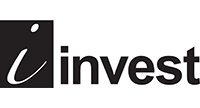With the lockdown ceasing outside quality inspectors from travelling to factories to examine aircraft, manufacturers hope the remote systems will ease the logjam in deliveries after they slowed to a trickle in April.
Aircraft makers make at least half their revenue and generate significant cash at delivery. The pandemic has caused a cash squeeze across the industry, therefore right now every delivery counts.
Plane maker Airbus “e-delivered” three A320neo jets in April and Italian helicopter maker Leonardo is in talks with 20 clients about using its “smart delivery” HeliLink video system for inspections. However, deliveries remain at a fraction of usual levels.
Turboprop make ATR, which is co-owned by Leonardo and Airbus, is also offering customers digital ways to sign off on their purchases after it failed to make any deliveries in the first quarter.
Nevertheless, industry sources say there are still significant obstacles that are likely to check a resurgence in deliveries anytime soon.
Additionally, customers themselves have been hit hard by the slump in demand for air travel since the pandemic struck. Many buyers are reluctant to trust remote inspections following a raft of quality problems on customised jetliner cabins.
Ishka aviation consultancy said May airplane deliveries could be worse than depressed levels seen in April.
Taking delivery of an aircraft worth millions of dollars is a complex process involving pilots, inspectors and lawyers before handover documents are signed. Finished jets have been known to sit at factories for months while airlines squabbled over cabin quality.
There are two parts to the delivery process: the technical commercial inspection, which is when any disputes tend to arise, and taking ownership of the aircraft, which triggers payment.
The plans for “digital deliveries” do not cover the safety of individual aircraft, which is regulated by public authorities.
CASH CYCLE
Leonardo’s HeliLink app allows clients to carry out tests and perform maintenance remotely, using on-site specialists connected by video. The helicopter is then shipped to the client or a Leonardo service outpost to be collected.
A company source said Leonardo’s first “smart delivery” would be finalised in the coming days.
Leonardo delivered 11 helicopters in the first quarter, barely half the 19 that went to clients in the same period last year, helping to drive divisional revenue down 13%.
“Smart deliveries could involve up to 20 customers in the next few months,” the company source said.
Airbus has created a three-stage e-delivery process which involves connecting with the buyer in a secure virtual environment where the two sides can simplify contractual transactions, from drafting and negotiating the delivery documents up to the remote transfer-of-title digital signature.
Industry sources said the digital transfer of ownership can save paperwork and legal costs, but that few airlines have so far been willing to delegate physical inspections to manufacturers, especially of larger jets.
In the United States, Boeing has completed virtual shipments in the past and is ready to offer them again, according to one industry source, but is mainly focused on restoring its grounded 737 MAX to service after resuming output last week.
Even so, some analysts believe the innovation will smooth deliveries even after the pandemic.
“The industry is bracing for a tough period of two or three years,” said Paolo Rinaldini of AlixPartners consultancy. “Digital delivery is a good solution to shorten the cash cycle and get the money for the goods sold.”
Reported by Francesca Landini
Sourced Reuters
For more Innovation & Technology news follow i-invest Online.

